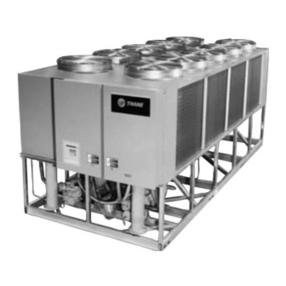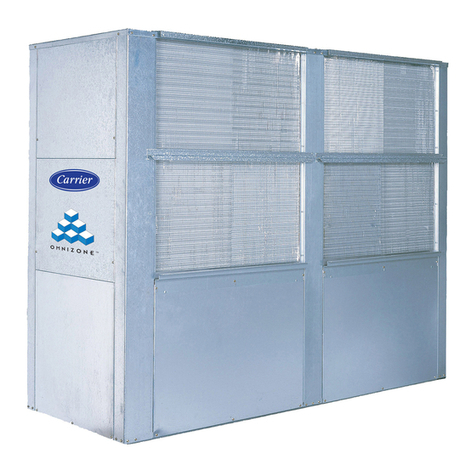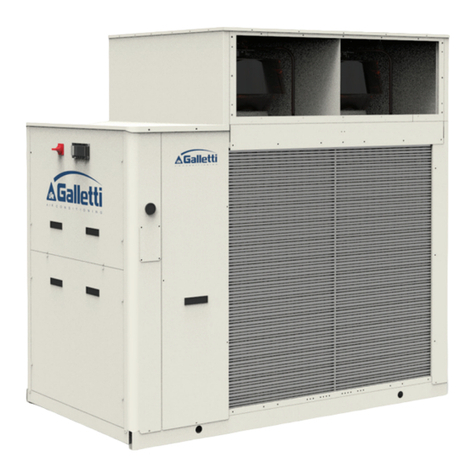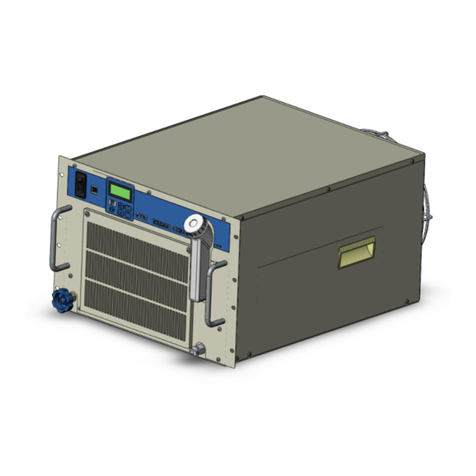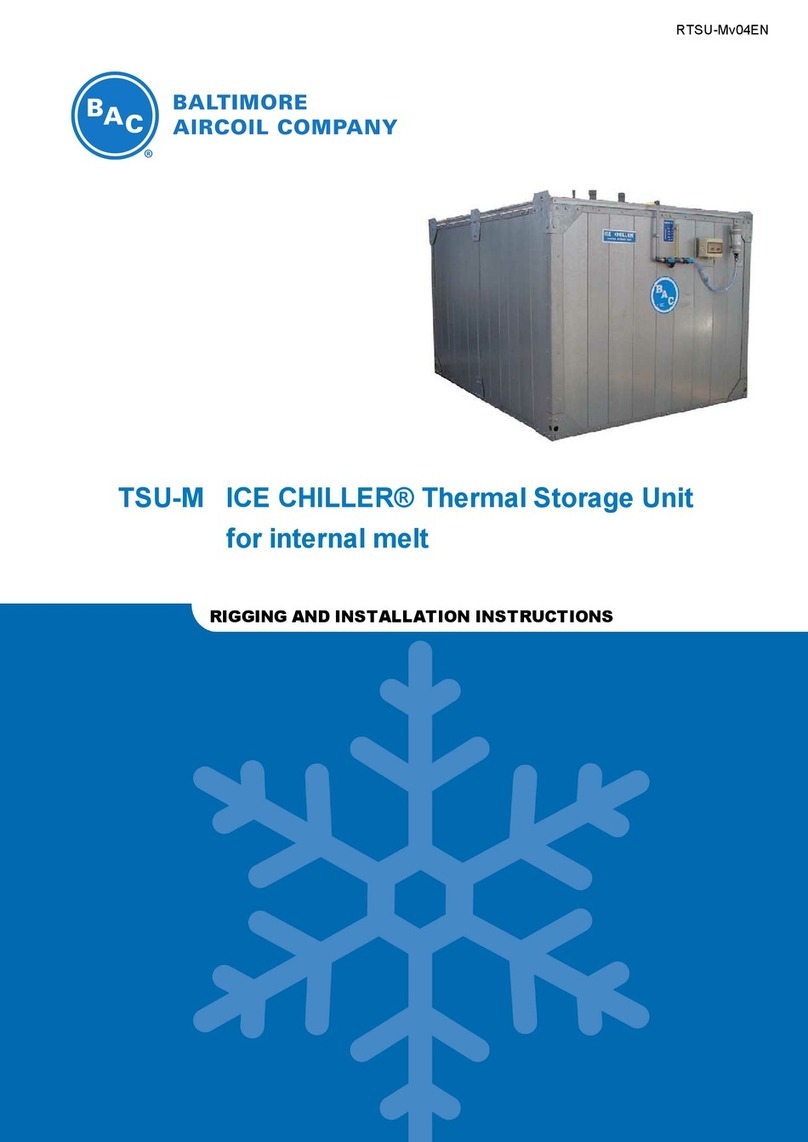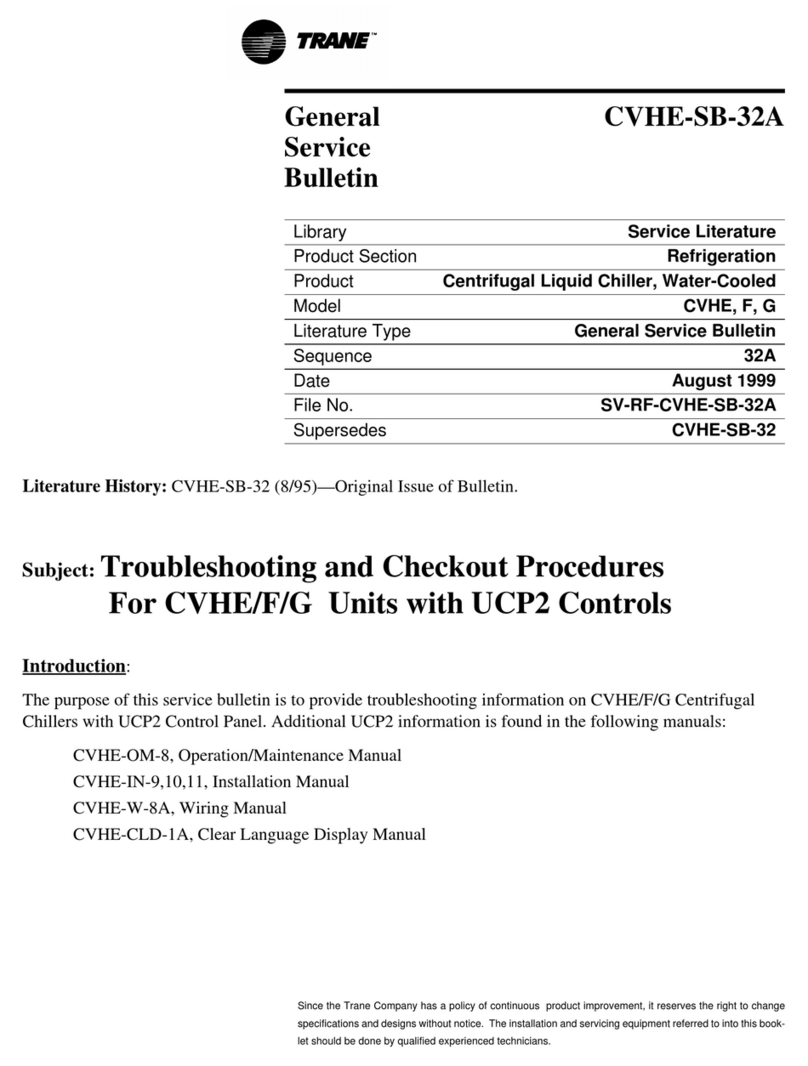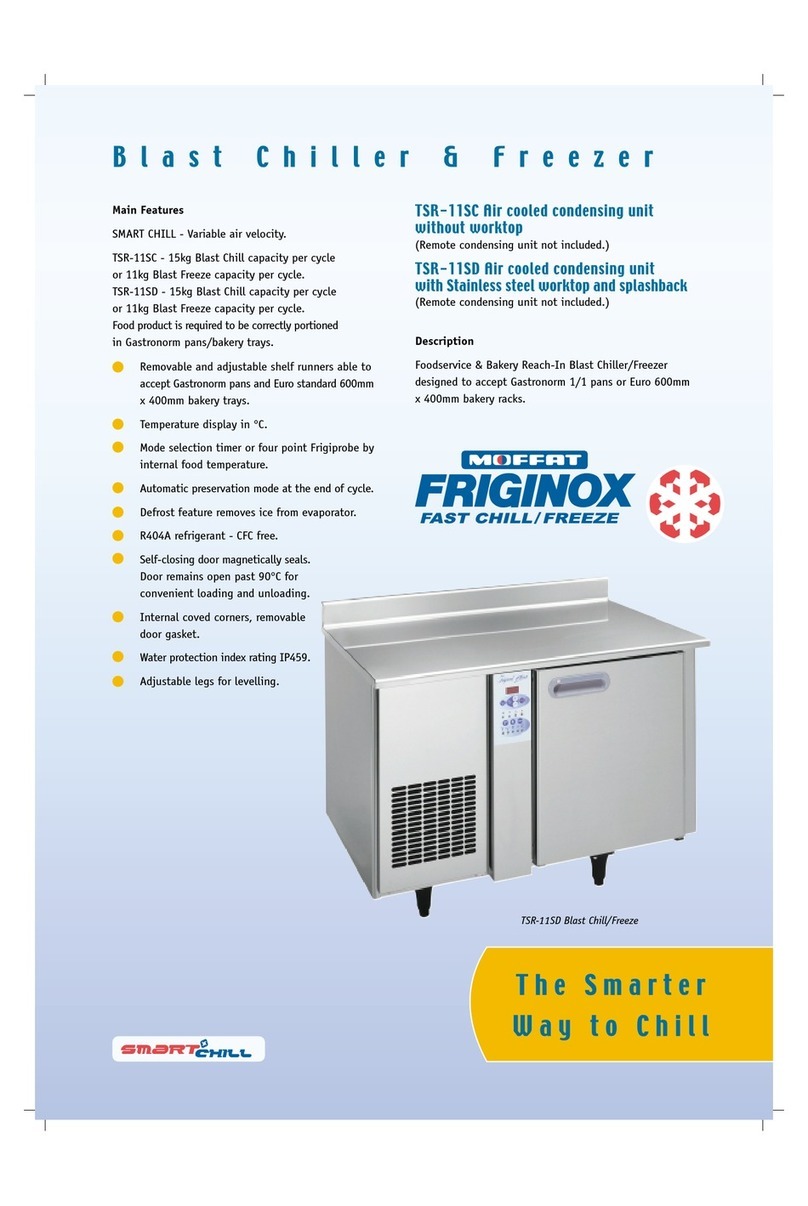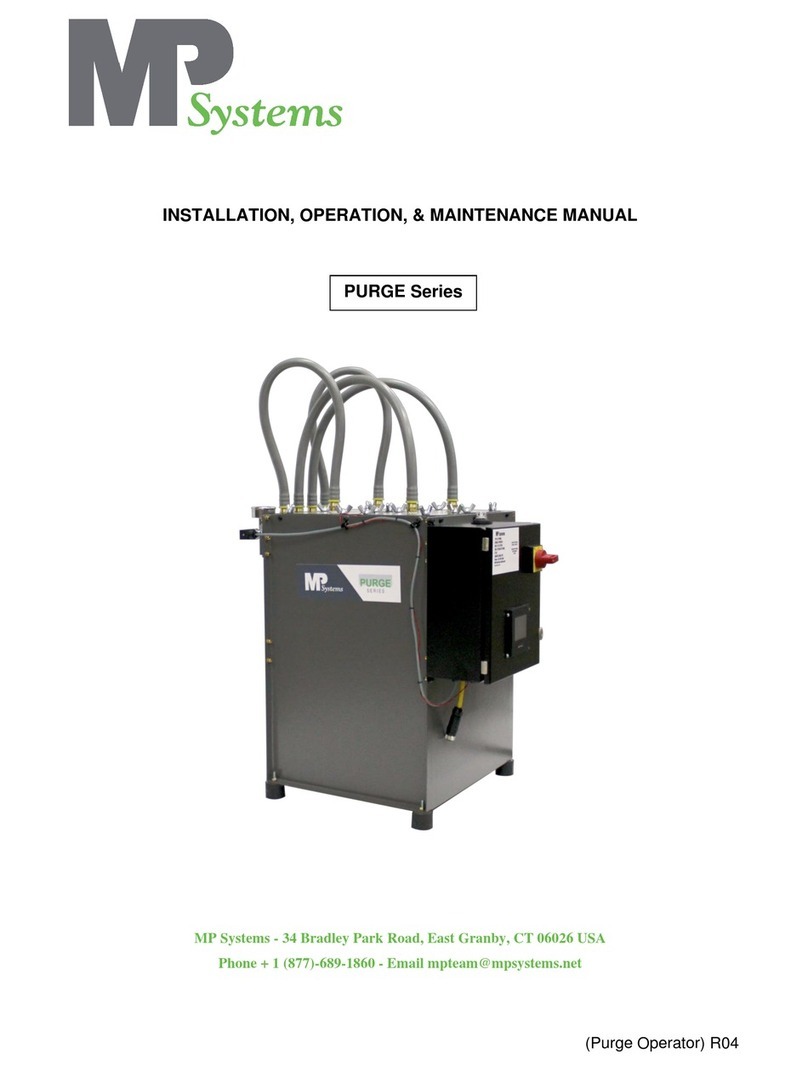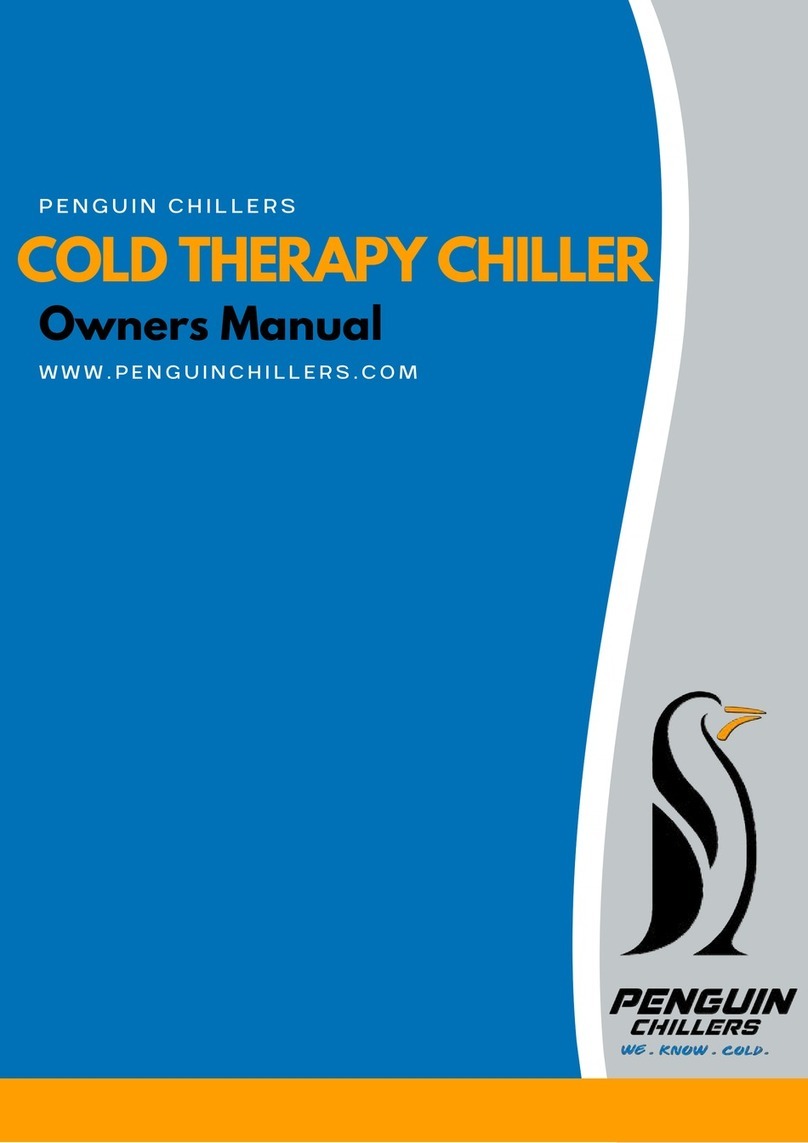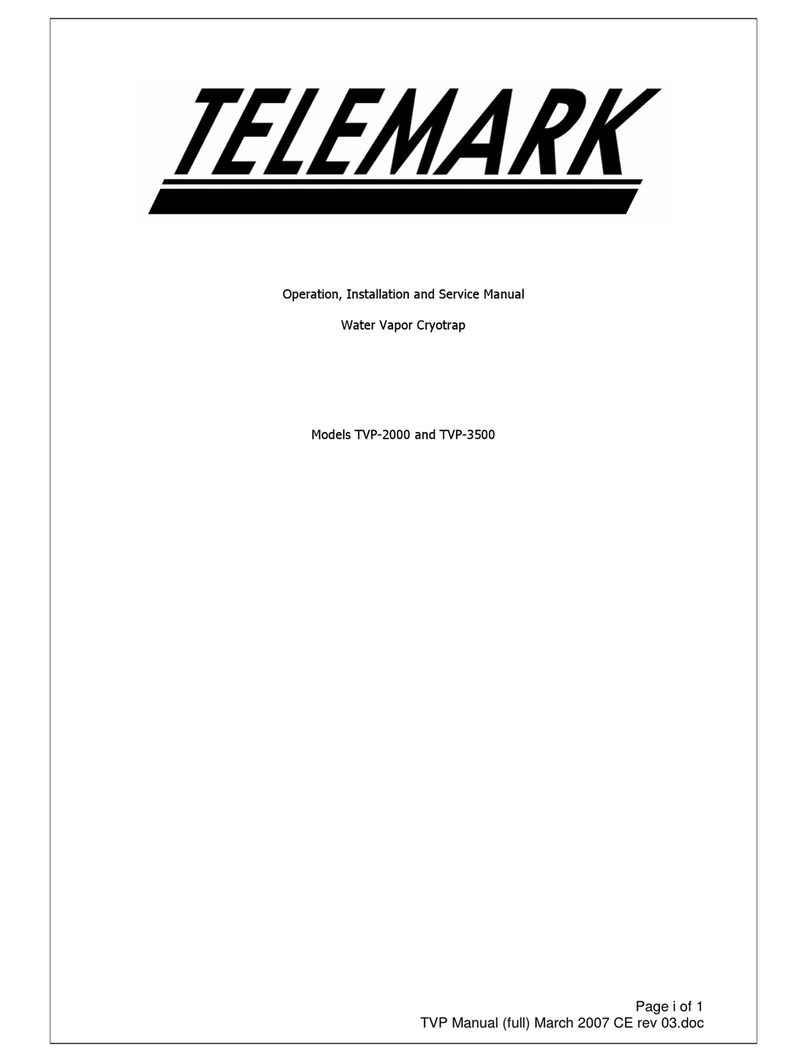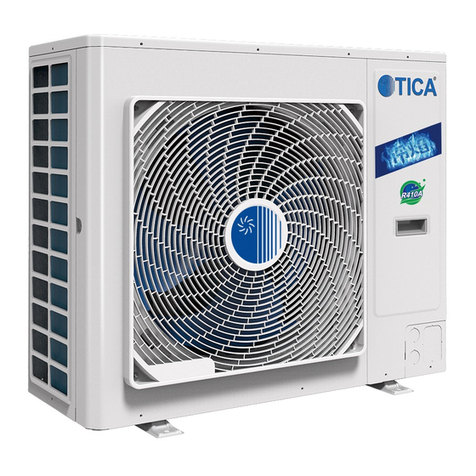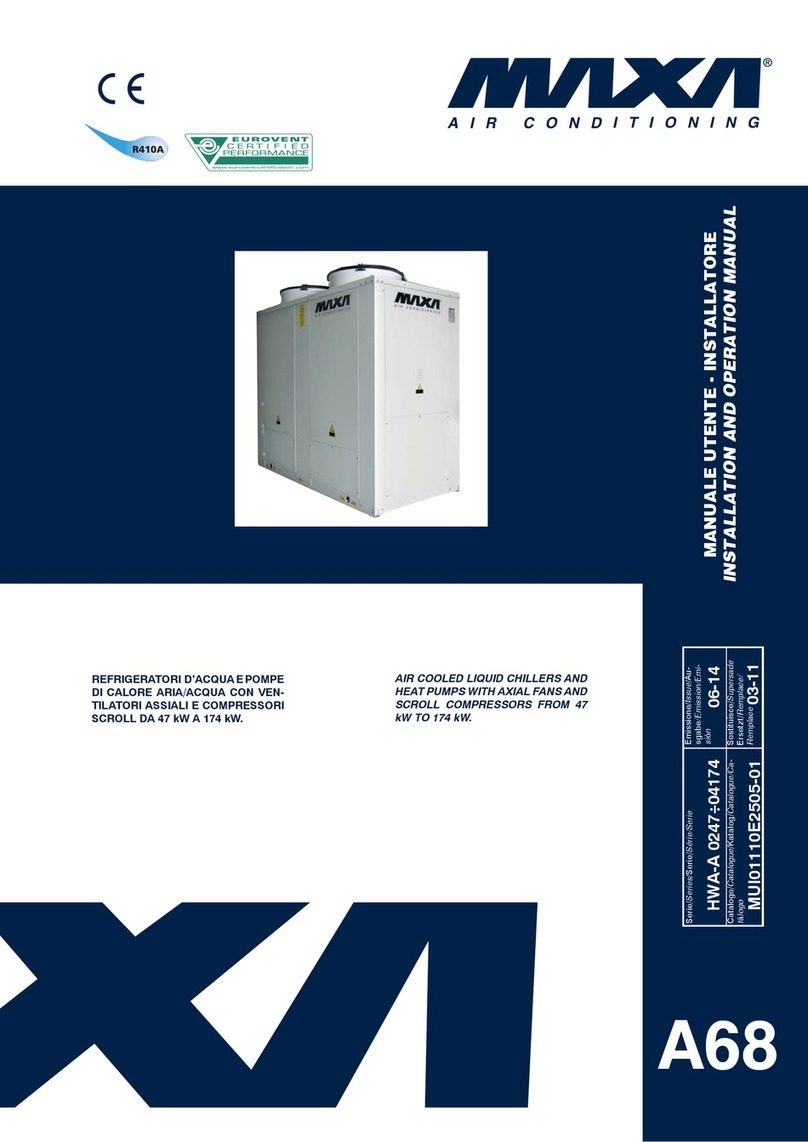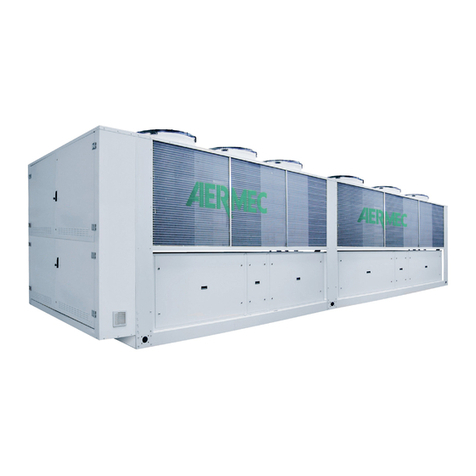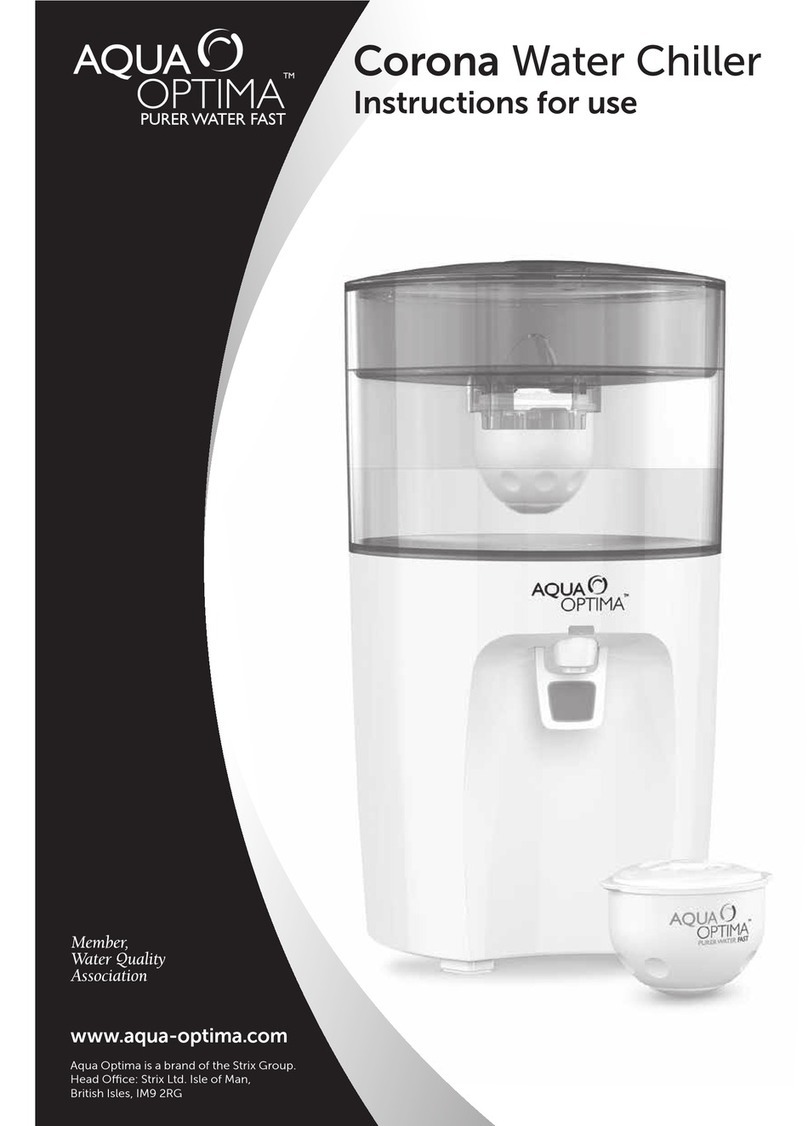
2. Allow any ice present on the tubes of the Ice Chiller®Coils to melt. If the tank is located outdoors or in an
unheated area and there is a possibility of the water in the tank freezing, drain the tank and all exposed water
piping. If freezing is not a problem, the tank does not need to be drained and full melt out is not necessary.
3. If the tank is drained, leave the drain connection open to allow any water that might enter the tank to drain out.
4. Properly position the insulated tank covers to minimize dirt and debris accumulation within the tank.
Daily operating guidelines
The Ice Chiller®Thermal Storage Coils typically run in either an Ice Build or Ice Melt mode of operation. On
external melt applications, the BAC Ice Logic™ ice thickness controller is provided to control compressor/glycol
chiller operation as a function of ice thickness. The basic sequence of operation and control points for each of
these modes is described below. Each system design is unique and variations in the operating modes may occur.
If you have any questions about application of the operating sequences listed below, please contact your BAC
Balticare representative to review your specific application.
Since the Ice Logic™ ice quantity controller can only measure the ice thickness at the point where the sensors are
installed, it is necessary to regularly inspect if the ice is built evenly on all the ice coils. During ice melt-out, it is
typical to see some non-uniformity of the ice pattern. The ice pattern can be considered normal when no significant
horizontal bridging (blockage) is apparent in the unit at the end of the ice build cycle and when low leaving
temperatures are obtained.
ICE BUILD - DIRECT REFRIGERANT FEED
1. Begin the ice build cycle upon receiving a signal from the plant control system. Usually, this signal is triggered
by a time clock indicating the start of the available ice build time.
2. Turn on the air agitation blower(s) feeding the ice storage tank.
3. On coils fed by pump recirculation, open the wet suction return valves, then any liquid feed valves installed at
the Ice Chiller®Coils.
4. Turn on the compressors and refrigerant feed system.
5. After the first three hours of ice build, it is suitable to turn off the air agitation blower(s).
6. In response to a signal from the plant control system, stop the ice build cycle. The signal to end the ice build
cycle can come from a number of sources. Typical examples follow:
- The ice thickness control
The ice thickness control is a safety control and must override all other controls to prevent damage
to the coils.
- A control system time clock.
7. Close the refrigerant feed valves, then close the refrigerant suction or wet return valves.
8. Turn off the refrigeration system.
9. The Ice Chiller®Coils are now charged and available to provide cooling.
ICE BUILD - SECONDARY COOLANTS
1. Begin the ice build cycle upon receiving a signal from the plant control system. Usually, this signal is triggered
by a time clock indicating the start of the available ice build time.
2. Open any glycol inlet and outlet valves installed at the Ice Chiller®Unit Coils.
If both inlet and outlet glycol valves are used on the Ice Chiller®Coils, the design must allow for a
bypass relief around the valves. This will prevent an excess build-up of pressure in the coils as a result
of the expansion as glycol in the coils warms up.
3. Turn on the glycol circulating pump(s) to establish flow between the glycol chiller(s) and the Ice Chiller®Unit.
4. Turn on the air agitation blower(s) feeding the ice storage tank.
5. Once glycol flow has been established, turn on the glycol chiller(s). Follow the chiller manufacturer's start-up
procedures and safeties.
W W W . B A L T I M O R E A I R C O I L . E U
10
